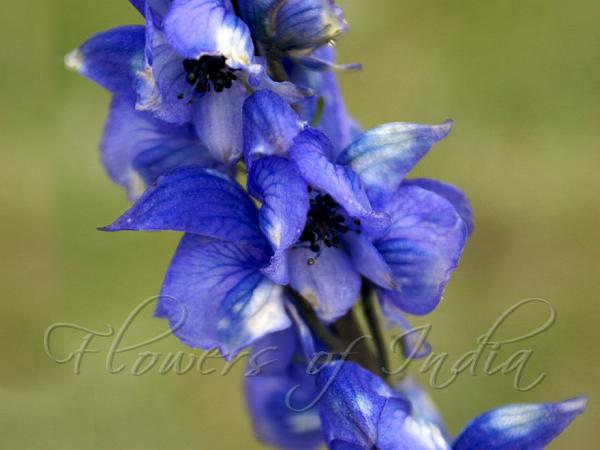|
| Gaping Monkshood |
|

|

| File size | 102267 |
| Original date | 8/17/11 10:53 AM |
| Resolution | 880 x 660 |
| Flash | Flash did not fire, auto |
| Focal length | 50.0mm |
| Exposure time | 1/250s |
| Aperture | 5.6 |
| Focus Distance | |
| Metering Mode | Multi-segment |
| Camera make | SONY |
| Camera model | DSLR-A100 |
| Sensor type |
|
|
|
|
Photo: |
Botanical name: Aconitum chasmanthum Family: Ranunculaceae (Buttercup family)
Gaping Monkshood is a perennial herb 1-2 ft cm
tall, with leafy stem. Leaves are regularly distributed, the upper
leaves only slightly smaller than the lower ones.
They are deeply cut, pentagonal-circular in outline, 4.2-4.8 × 4-5.6
cm, both surfaces hairless or nearly so. Central segment is rhombic,
base narrowly cuneate, 3-parted nearly to base; lobes dissected;
lateral segments obliquely flabellate, unequally 2-parted. Flowers are
borne in racemes up to 30 cm long or longer. Flowers have a gaping open
mouth, compared to other Monk's hood flowers. Sepals are blue or white
with blue veins, rarely pale purple, lateral ones circular to nearly
square, not contiguous with helmet. Claw of petals is 5-7 mm. Filaments
are often almost hairless, winged, wings not ending in tiny teeth.
Carpels are generally 5, straight, hairless or with a few hairs along
the back and near the style, sometimes hairy. Follicles are oblong,
1-1.6 cm. Seeds have unequal wings. Gaping Monkshood is found in the
meadows of the Himalayas, from Pakistan to Nepal, at altitudes of
2300-4300 m. Flowering: August.
Medicinal uses:  The dried pulverized roots are mixed butter and given as ointment on
abscess and boils also mixed with tobacco and uses as “Naswar”. The
whole plant is highly toxic - simple skin contact has caused numbness
in some people.
The dried pulverized roots are mixed butter and given as ointment on
abscess and boils also mixed with tobacco and uses as “Naswar”. The
whole plant is highly toxic - simple skin contact has caused numbness
in some people.
 The dried pulverized roots are mixed butter and given as ointment on
abscess and boils also mixed with tobacco and uses as “Naswar”. The
whole plant is highly toxic - simple skin contact has caused numbness
in some people.
The dried pulverized roots are mixed butter and given as ointment on
abscess and boils also mixed with tobacco and uses as “Naswar”. The
whole plant is highly toxic - simple skin contact has caused numbness
in some people. | Identification credit: Gurcharan Singh | Photographed in Apharwat, Kashmir. |